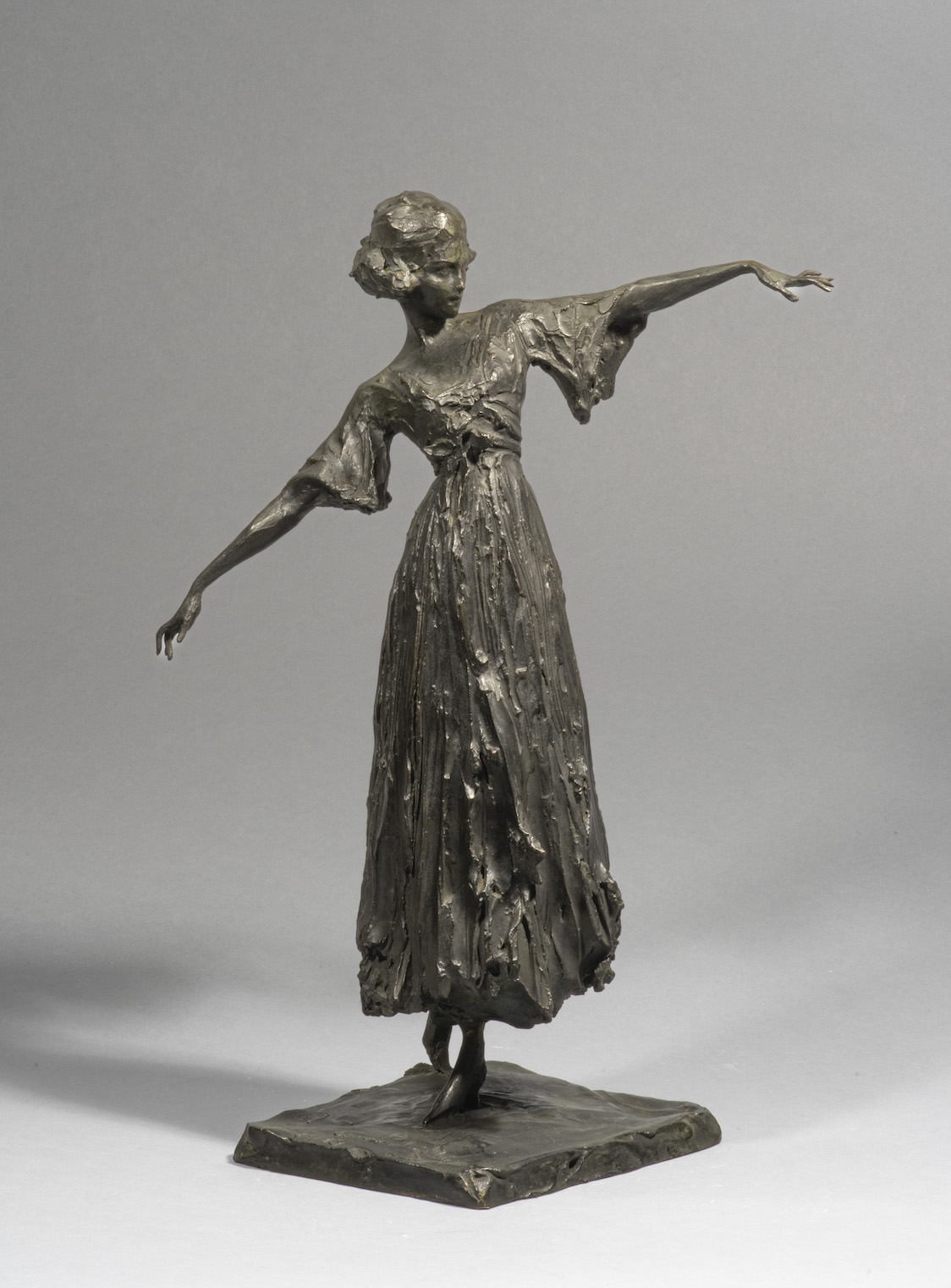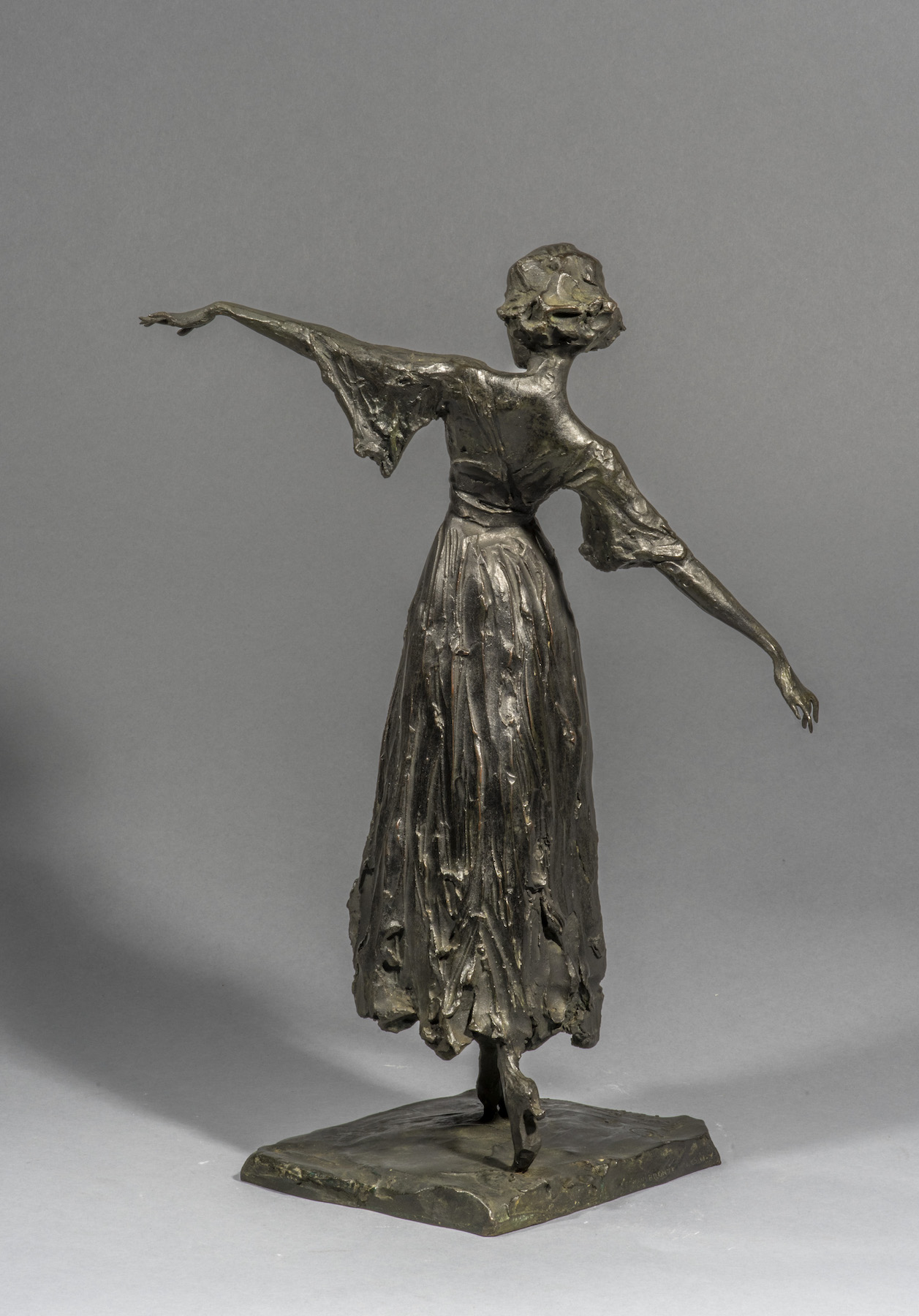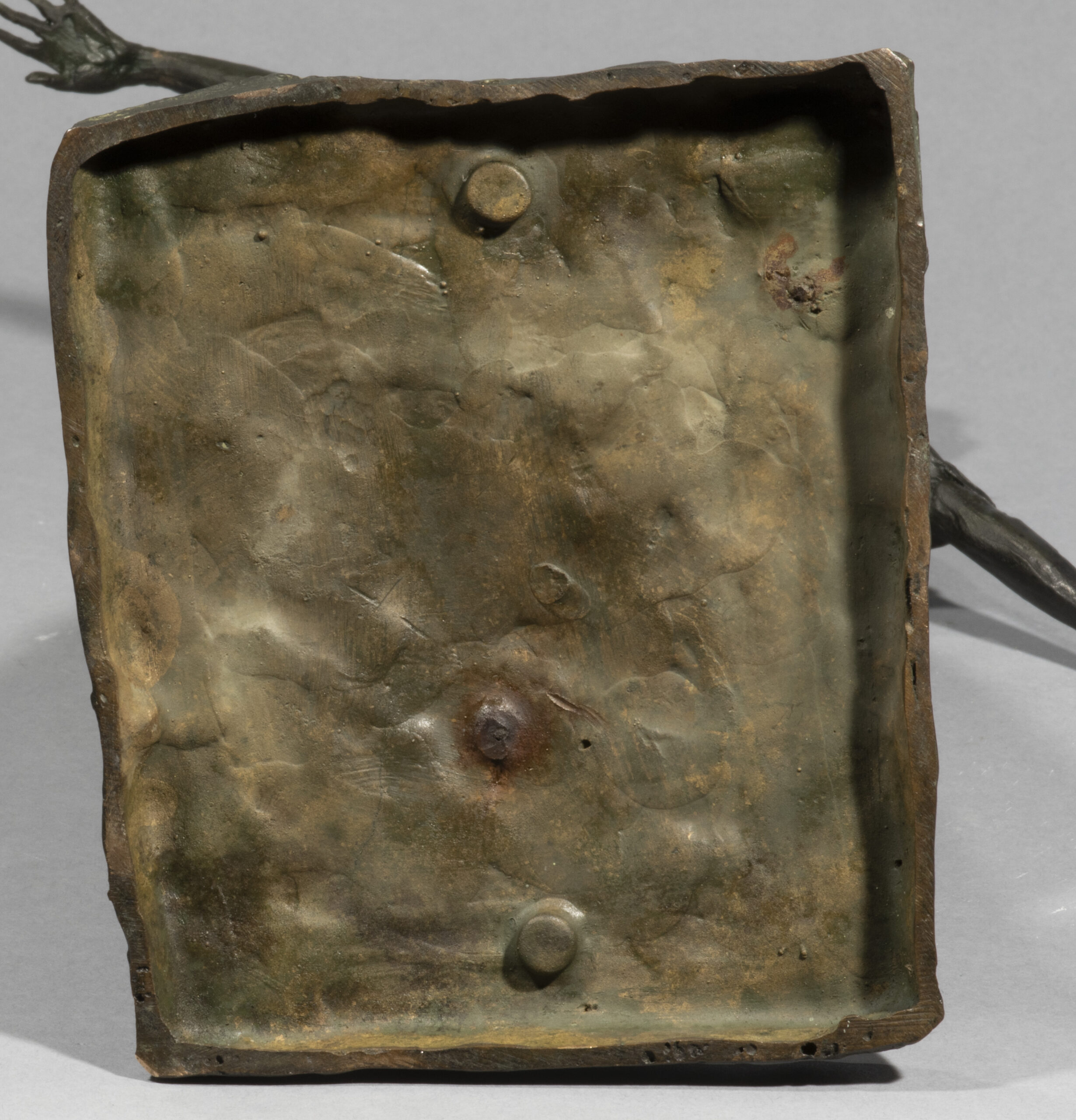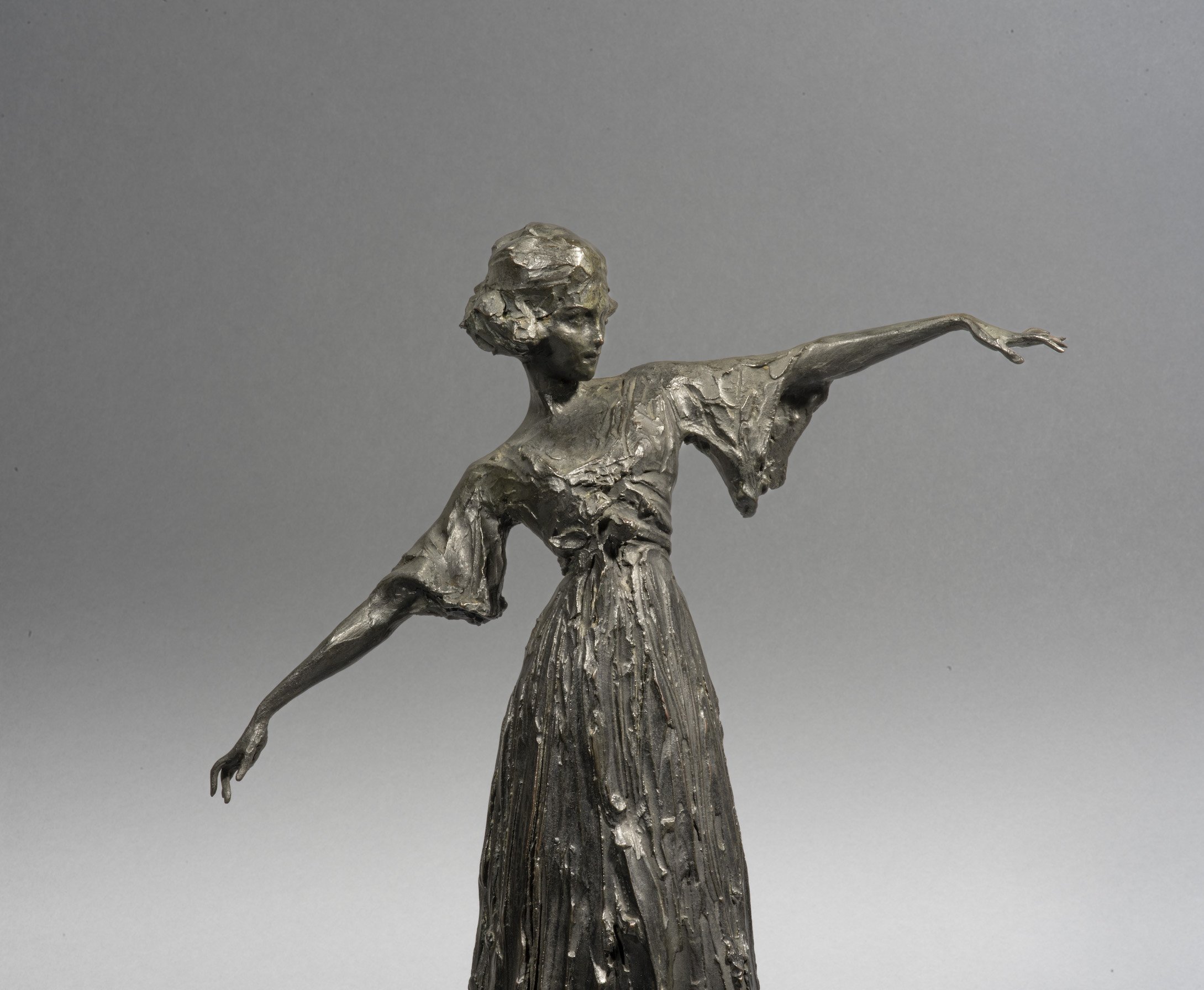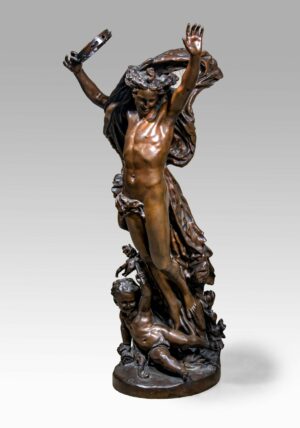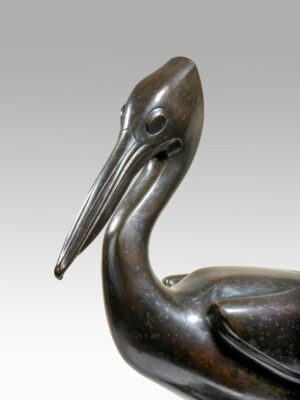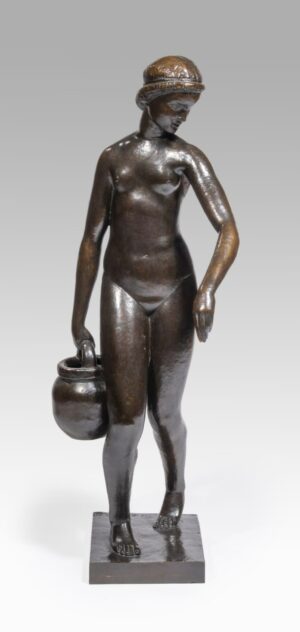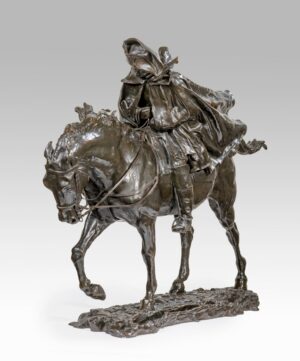Description
This statuette is a one of a series of dancers’ sculptures: Countess Tamara de Svirsky, 1909; Spanish Dancer, known as The Argentinita, 1910; Lady Constance Stewart Richardson, 1914; Anna Pavlova, 1915-16 (three models).
Irene Castle (1893-1969), a very famous ballerina who, together with her actor husband Vernon Castle, brought modern dance to the height of fashion during the first decades of the twentieth century, could but fascinate Troubetzkoy. The artist was then living across the Atlantic and rubbing shoulders with New York’s artistic upperclass society. The couple reached the peak of popularity in Irving Berlin’s first Broadway show, Watch Your Step (1914), where they popularized Foxtrot. They also helped promote ragtime, jazz rhythms and African-American dance music. A fashion icon, Mrs. Castle launched the fashion for shorter skirts, loose dresses as well as the tomboy cut popular in the Roaring Twenties. The sculptor knew better than anyone how to capture the graceful movement of her slender ankles and wrists, the haughty bearing of her head, the flexibility of her hands, the agility of her silhouette. His sharp-edged style, in which no line is fixed, is entirely in communion with the living model in movement.
The records of the American foundry Roman Bronze Works, with which Troubetzkoy worked in the United States, mention several entries of interest to us: ‘February 3, 1915 Statuette Mrs Castle’ ‘June 10, 1915 New Model St. Mrs V. Castle #1’ ‘June 14, 1915 N.M. St. Mrs Castle #2’ ‘ June 24, 1915 N.M. St. Mrs Castle #4’ ‘ September 21, 1916 Mrs Vernon Castle’. There were two sculptures of the same subject and we know that a copy, similar to ours, dated 1916 has come up for sale (London, Sotheby’s December 5, 2012, No. 169). We can therefore conclude that the “new model”, cast exclusively in 1915, is not ours. Our sculpture could have been cast (commissioned or completed) on February 3, 1915, and could be the first of two copies, cast in bronze by R.B.W. As far as we know, the subject has not been taken up by the Parisian founders.

